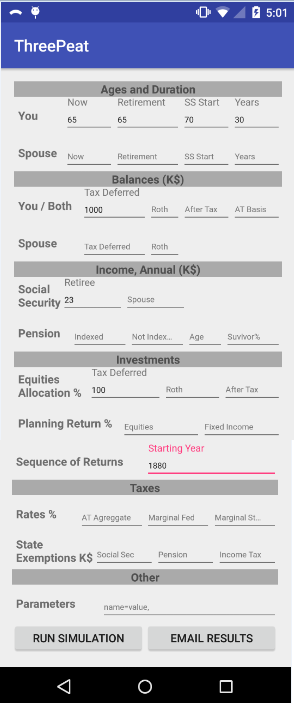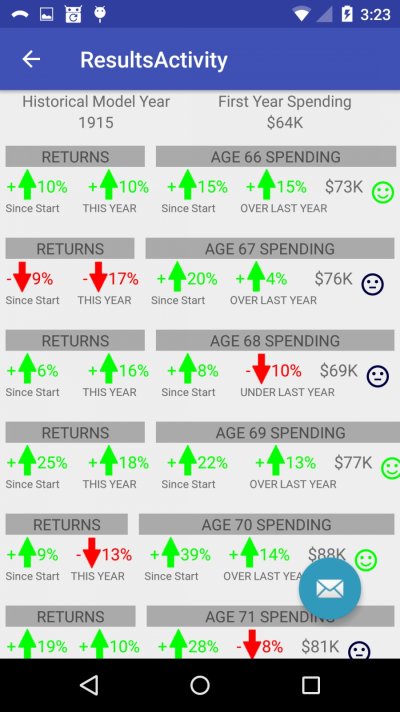audreyh1
Give me a museum and I'll fill it. (Picasso) Give me a forum ...
I thought VPW meant variable percentage withdrawal whereas %remaining portfolio is a fixed percentage withdrawal method, so I'm still a bit confused.
Oh, OK - I see it's simply increasing the % withdrawal rate each year based on age, and determined by your AA. Otherwise it's calculated off the remaining portfolio. https://www.bogleheads.org/wiki/Variable_percentage_withdrawal
I would mention to folks that this does not reduce income volatility in a noticeable way. Yes, during a multi-year down streak your percent withdrawn may sneak up a bit, but it is in such small percent increments, that it will easily be overwhelmed by bear market drops and/or rapid inflation rises.
Clyatt's rule has a similar "feature" as it is not inflation adjusted, so even though you are never withdrawing income less than 5% of the prior year, that's in nominal terms, and when a run like 1966 is compared against the %remaining portfolio method the nominal income withdrawn each year is very close. Meanwhile inflation is eating your lunch for a while before you catch back up. Short bear markets without significant inflation (like in the 2000s) may be relatively less painful using the Clyatt rule rather than straight % of remaining portfolio.
Oh, OK - I see it's simply increasing the % withdrawal rate each year based on age, and determined by your AA. Otherwise it's calculated off the remaining portfolio. https://www.bogleheads.org/wiki/Variable_percentage_withdrawal
I would mention to folks that this does not reduce income volatility in a noticeable way. Yes, during a multi-year down streak your percent withdrawn may sneak up a bit, but it is in such small percent increments, that it will easily be overwhelmed by bear market drops and/or rapid inflation rises.
Clyatt's rule has a similar "feature" as it is not inflation adjusted, so even though you are never withdrawing income less than 5% of the prior year, that's in nominal terms, and when a run like 1966 is compared against the %remaining portfolio method the nominal income withdrawn each year is very close. Meanwhile inflation is eating your lunch for a while before you catch back up. Short bear markets without significant inflation (like in the 2000s) may be relatively less painful using the Clyatt rule rather than straight % of remaining portfolio.
Last edited:



